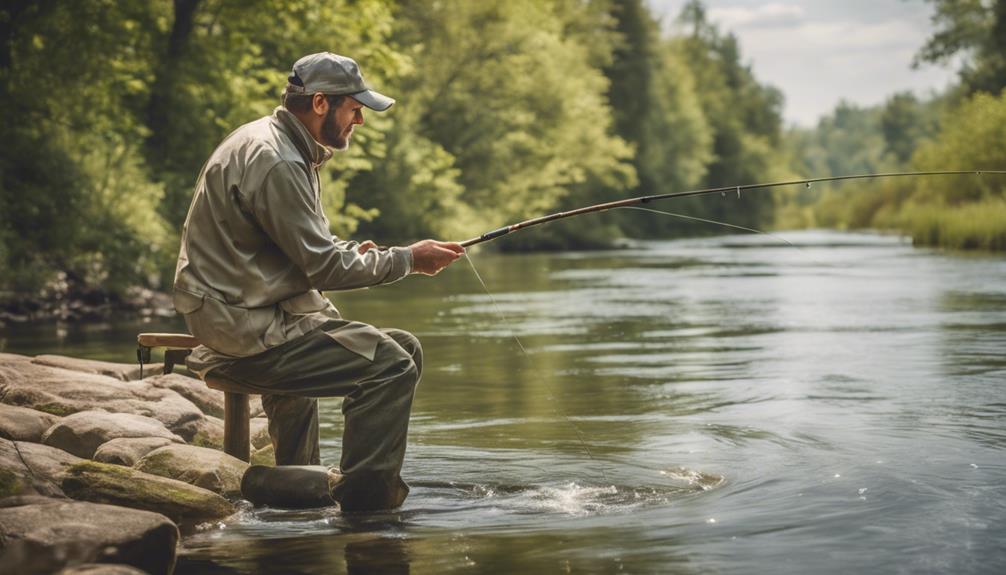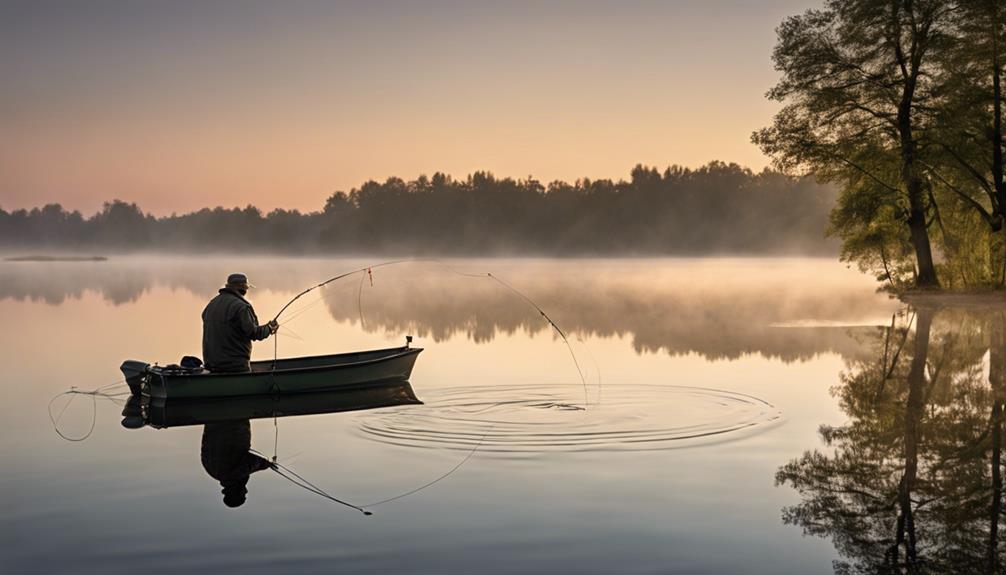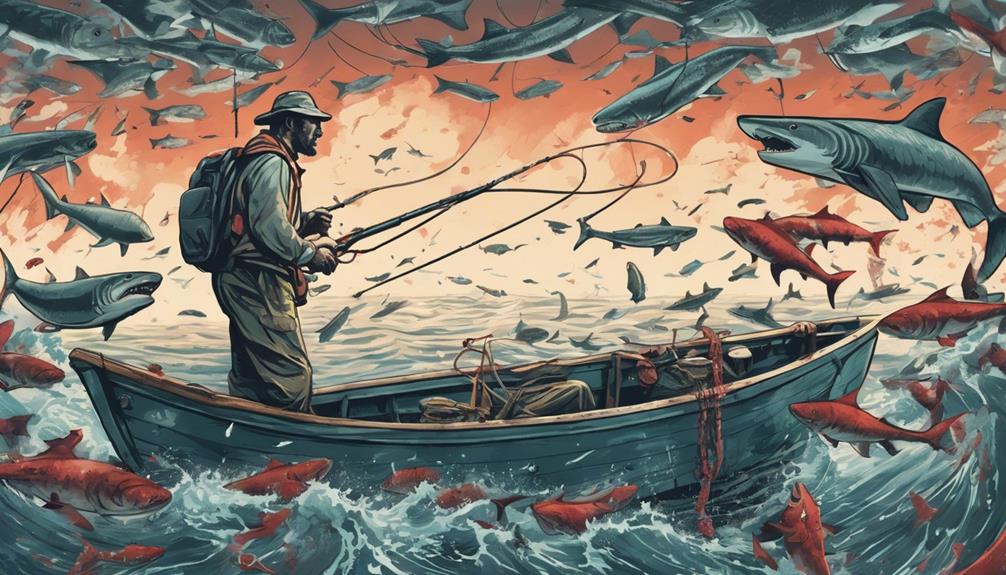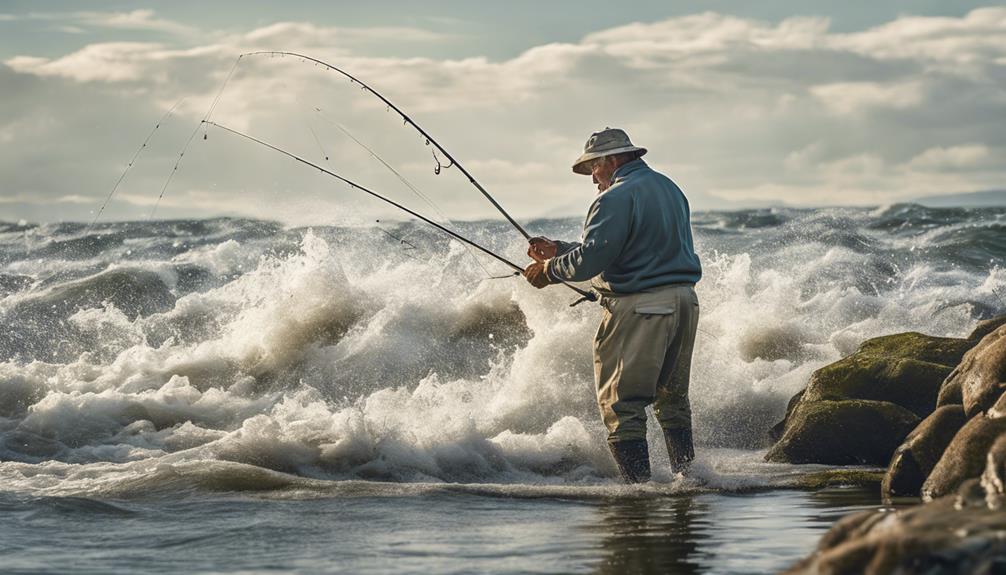Did you know that 85% of trout caught in rivers are due to proper fishing techniques? Understanding the intricacies of river trout fishing technique can significantly impact your success on the water.
From mastering the art of casting to selecting the right gear and bait, each aspect plays a crucial role in your ability to hook and reel in these elusive fish.
Stay tuned to discover the key reasons why honing your river trout fishing technique is essential for a rewarding and successful angling experience.
Benefits of Proper Trout Fishing Techniques
Mastering the proper trout fishing techniques can significantly enhance your chances of success on the river. By understanding the right methods, you can experience increased catch rates and improved angler satisfaction. One crucial technique to focus on is understanding the behavior of trout in different river conditions. Trout are known to be selective feeders, so knowing what they're feeding on during specific times of the day can make a significant difference in your catch rates.
Another essential aspect of proper trout fishing techniques is the ability to accurately cast your line. Being able to present your bait or lure naturally and effectively can entice more trout to bite, leading to a more successful fishing outing. Additionally, mastering the art of setting the hook at the right moment is vital. Setting the hook too early or too late can result in missed opportunities, while a well-timed hook set can secure your catch.
Furthermore, understanding the importance of using the right bait or lure for the specific conditions you're fishing in can also contribute to increased catch rates. Different types of bait and lures work better in certain situations, so being knowledgeable about what to use can greatly improve your success on the river. Overall, by honing your trout fishing techniques, you can enjoy more fruitful fishing trips and elevate your angler satisfaction.
Understanding River Currents for Fishing
To enhance your river trout fishing success, understanding how river currents impact fish behavior is crucial. Reading currents correctly allows you to position your bait or lure strategically, increasing your chances of a successful catch.
Here are a few key points to consider:
- Water Temperature: Fish are sensitive to changes in water temperature. Understanding how currents affect water temperature can help you locate areas where trout are more likely to be actively feeding.
- Casting Accuracy: Properly reading river currents enables you to make more accurate casts. By placing your bait or fly in the right spot, you can present it naturally to the fish, enticing more bites.
- Fly Selection: Different currents require different fly patterns for successful fishing. Being able to read the currents will help you choose the right fly to match the natural food sources that trout are feeding on.
Selecting the Right Fishing Gear
Select the appropriate fishing gear to optimize your river trout fishing experience. When it comes to rod selection, consider a lightweight and flexible rod around 7-8 feet in length for better control and sensitivity. Pair it with a reel that offers smooth drag and can handle light lines, such as a spinning reel with a high gear ratio. Reel options vary, but look for one with a reliable anti-reverse system to prevent the trout from escaping easily.
Regarding line weight, opt for a light line between 2-6 pounds to maintain sensitivity and prevent the trout from detecting the line. Furthermore, choose hook sizes ranging from 10-14 for smaller trout and 6-8 for larger ones. The right hook size will increase your chances of hooking the trout successfully.
Selecting the proper fishing gear tailored to river trout fishing is crucial for a successful outing. It not only enhances your fishing experience but also improves your chances of landing that prized trout. By paying attention to rod selection, reel options, line weight, and hook size, you can set yourself up for a rewarding day on the river. Remember, the right gear can make all the difference in your pursuit of river trout.
Importance of Casting Techniques
Efficiently casting your line is key to successfully hooking river trout and maximizing your fishing expedition. Improving accuracy and increasing distance in your casting techniques can make a significant difference in your fishing success. Here are some crucial points to consider:
- Practice Makes Perfect: Spend time practicing your casting technique to improve your accuracy. The more you practice, the better you'll become at placing your bait exactly where you want it to be.
- Mastering the Art of Control: Learning how to control the power and direction of your cast can help you reach distant spots where trout might be hiding. This skill is essential for reaching those elusive fish in the middle of the river.
- Adapting to Different Conditions: Different weather conditions and water currents can affect your casting. By mastering different casting techniques, you can adapt to these conditions and improve your chances of a successful catch.
Best Bait and Lure Choices
Improving your casting techniques is crucial for effectively selecting the best bait and lure choices when targeting river trout. When it comes to river trout fishing, using the right bait and lures can significantly increase your chances of success. One popular method is fly fishing, which involves using artificial flies to mimic insects or other natural prey of the trout.
For fly fishing, it's essential to match the hatch, meaning using flies that closely resemble the insects hatching at that time. Dry flies like mayflies or caddisflies work well when trout are feeding at the water's surface. Nymphs or wet flies are suitable for fishing below the surface where trout are actively feeding.
In addition to fly fishing, you can also consider using artificial lures such as spinners, spoons, or crankbaits. These lures can imitate small fish or other prey that trout feed on, making them effective in enticing strikes. When selecting artificial lures, consider the water conditions and the behavior of the trout. Brightly colored lures can attract trout in murky waters, while more natural or subtle colors may work better in clear streams.
Experimenting with different bait and lure choices while keeping casting techniques in mind will help you find success in river trout fishing. Remember to adapt to the fishing conditions and be patient as you hone your skills in selecting the best bait and lures for catching river trout.
Mastering Hook Setting Skills
To excel in river trout fishing, mastering the art of hook setting is essential for increasing your chances of successfully landing your catch. Hook setting mastery and technique refinement are crucial aspects that can make the difference between a missed opportunity and a rewarding catch. Developing precision hook setting skills is a continuous process that requires dedication and practice to enhance your angler skill development.
Here are three key points to consider:
- Timing is Everything: Understanding the right moment to set the hook is vital. Wait for the trout to fully commit to the bait or lure before setting the hook to ensure a solid connection.
- Setting the Hook with Confidence: A firm and swift hook set motion is necessary to penetrate the trout's mouth effectively. Hesitation can result in a missed hook set, allowing the fish to escape.
- Adapting to Different Conditions: Refine your hook setting technique based on the fishing environment and the behavior of the trout. Being adaptable and quick to adjust your approach can significantly improve your success rate.
Strategies for Fighting Trout
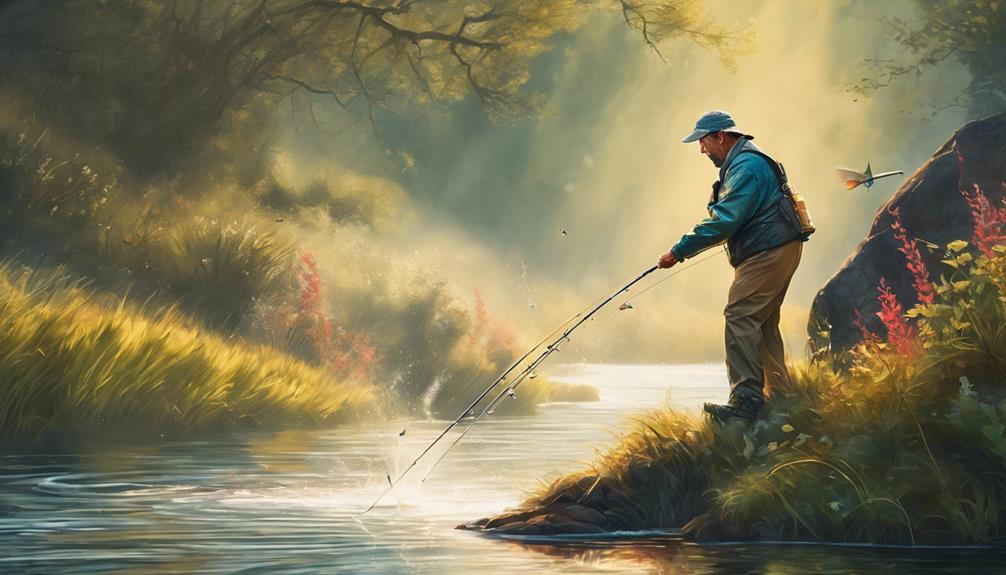
When engaging in the art of river trout fishing, your ability to effectively implement strategies for fighting trout plays a crucial role in securing your catch. Proper hooking is essential in ensuring that the trout stays attached to your line during the fight. Make sure to set the hook firmly but not too aggressively to avoid tearing the fish's mouth.
Once you have properly hooked the trout, the next step is to engage in effective fighting techniques. Keep a steady tension on the line to prevent the fish from shaking the hook. Allow the trout to run if it wants to but maintain control over the fight by gently guiding it in the direction you want it to go.
It's important to be patient and let the trout tire itself out. Avoid rushing the process as this could result in the fish breaking free. Use the flexibility of your fishing rod to absorb sudden movements and avoid sudden jerks that could lead to the line snapping.
Conservation Practices for Sustainable Fishing
Implementing proper conservation practices is essential for ensuring sustainable fishing practices while engaging in river trout fishing. To contribute to the preservation of the ecosystem and the longevity of the sport, consider the following:
- Habitat Protection: By respecting the environment where trout live, you help maintain their homes intact. Avoid damaging vegetation along riverbanks, as it plays a crucial role in providing shelter and food for the fish.
- Catch Limits: Adhering to catch limits is crucial in preventing overfishing and depletion of fish populations. Respect the regulations in place and only take what you need, allowing the fish to reproduce and maintain a healthy population.
- Catch and Release: Engaging in catch and release practices can significantly impact fish populations positively. By releasing the fish back into the water carefully, you ensure the survival of the species and contribute to maintaining a balanced ecosystem.
Frequently Asked Questions
How Can Weather Conditions Affect River Trout Fishing Success?
When you're out fishing for river trout, weather conditions play a big role in your success. The water temperature can affect where the trout are located, impacting your chances of catching them.
Rainfall can also influence trout behavior, making them more or less active depending on the conditions.
Are There Any Specific Regulations or Rules That Anglers Need to Follow When Fishing for River Trout?
When fishing for river trout, it's crucial to follow fishing regulations and conservation practices. Rules like catch limits help protect trout populations. By respecting these guidelines, you contribute to sustainable fishing practices.
Additionally, mastering effective fishing techniques enhances your chances of a successful catch while also minimizing harm to the environment. Remember, by adhering to regulations and adopting proper techniques, you can enjoy trout fishing responsibly and ethically.
What Are Some Common Mistakes That Beginner Anglers Make When Fishing for River Trout?
When fishing for river trout, beginners often make mistakes like improper casting techniques. Remember to practice hook setting to ensure a successful catch.
Another common error is using the wrong bait, so pay attention to proper bait selection. Beginners might struggle with identifying trout habitats, but with experience, you'll improve.
Keep these tips in mind to enhance your river trout fishing skills and increase your chances of a successful fishing trip.
How Can Anglers Determine the Best Time of Day to Fish for River Trout?
To pinpoint the best time to catch river trout, watch the moon phase and barometric pressure. Keep an eye on water temperature and insect activity. Trout are more active during certain moon phases and when the barometric pressure changes. They also feed more when there are insects around.
What Are Some Tips for Safely Releasing Caught Trout Back Into the River?
When releasing caught trout back into the river, make sure to handle them properly for conservation. Use catch and release techniques like keeping them in the water, minimizing handling, and using barbless hooks. Avoid exhausting the fish and support them in the water until they swim away on their own.
These practices help maintain trout populations and ensure the fish have a better chance of survival after being caught.
Conclusion
In conclusion, mastering proper river trout fishing techniques is crucial for a successful and enjoyable fishing experience.
By understanding river currents, selecting the right gear, perfecting casting techniques, and using the best bait and lures, you can increase your chances of catching more trout.
Additionally, practicing conservation practices ensures sustainable fishing for future generations.
So remember, honing your skills and knowledge in trout fishing will ultimately lead to a more rewarding and fulfilling experience on the water.
